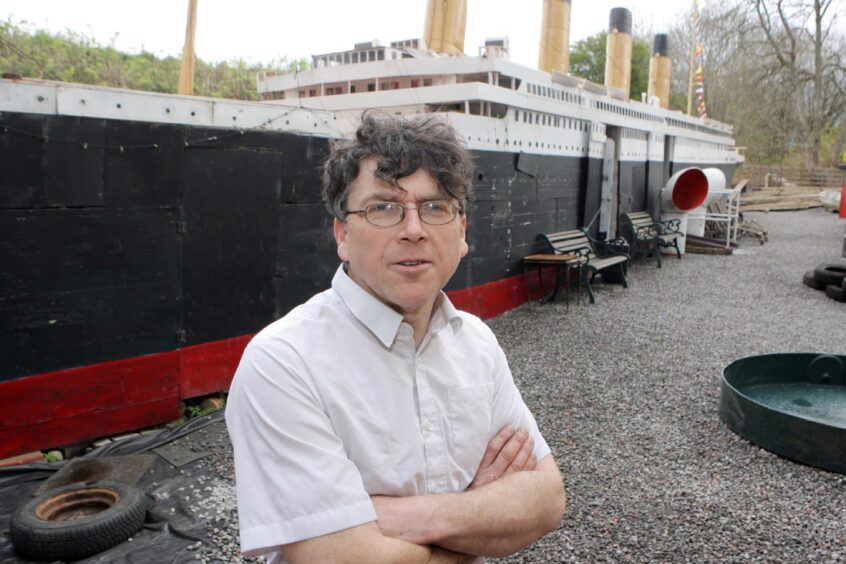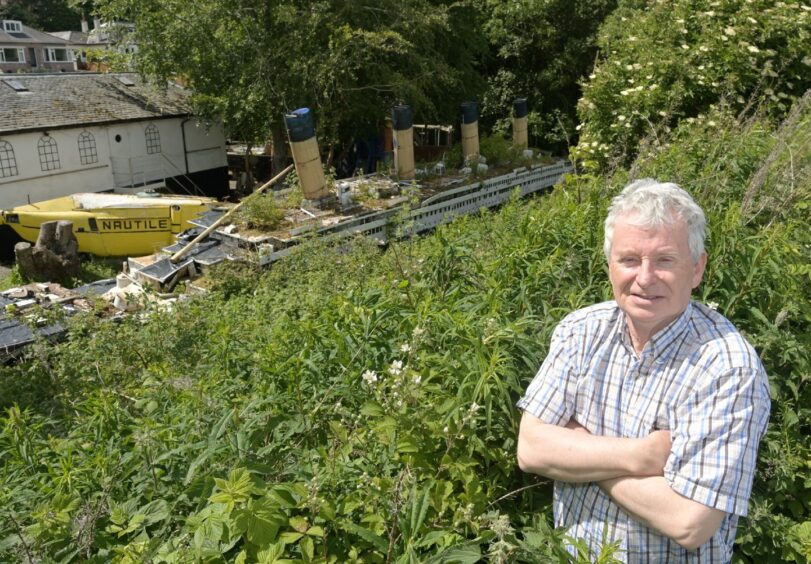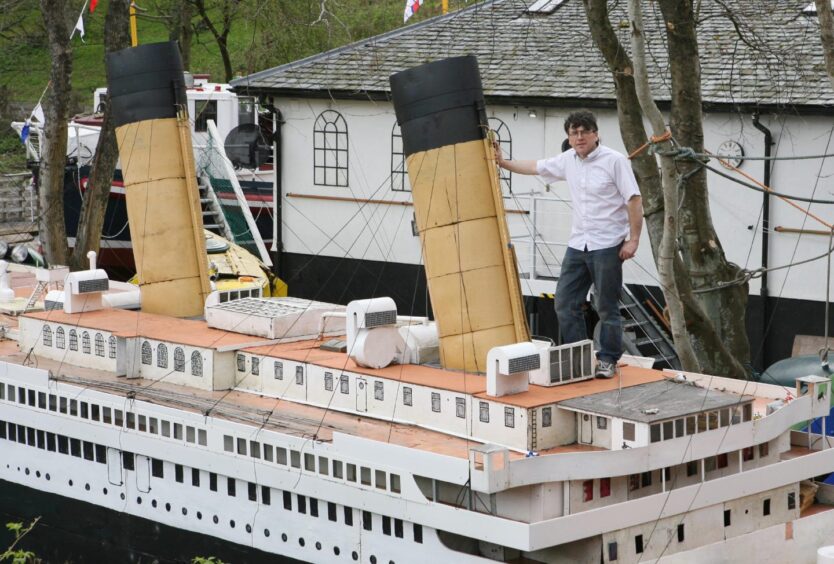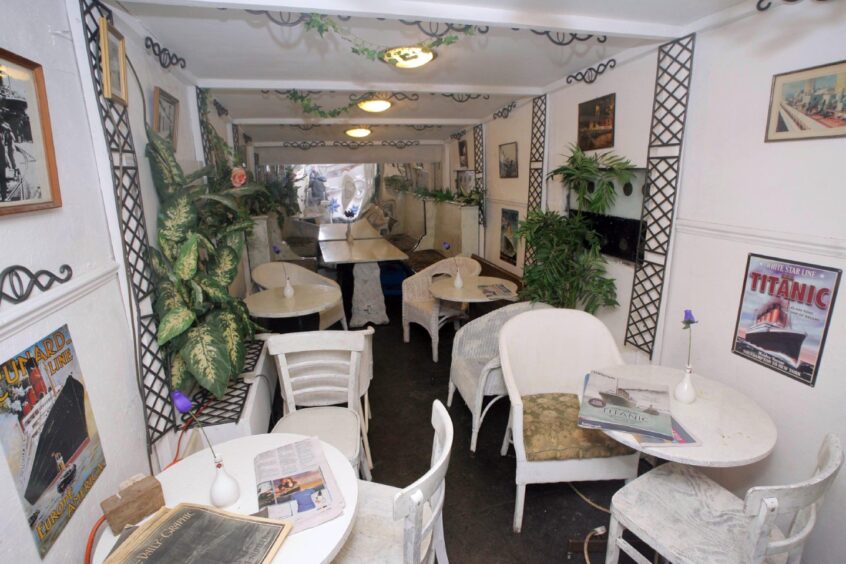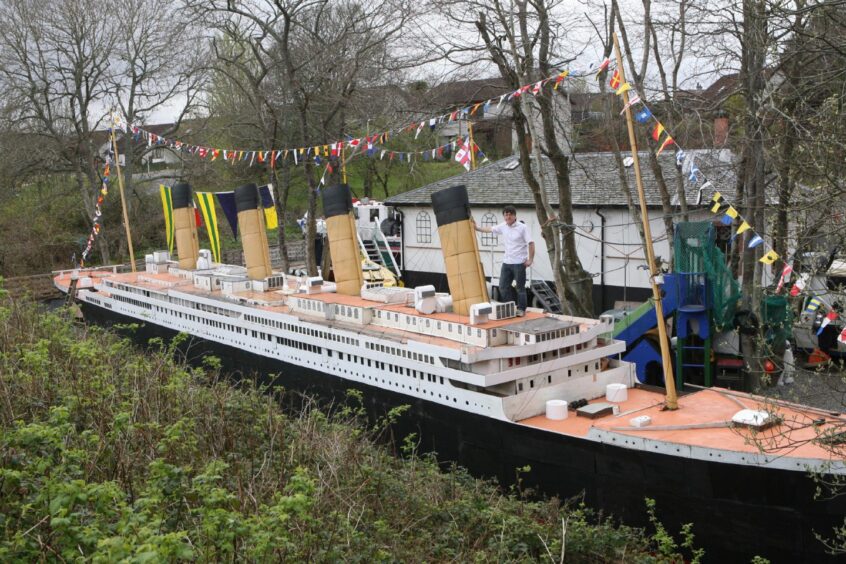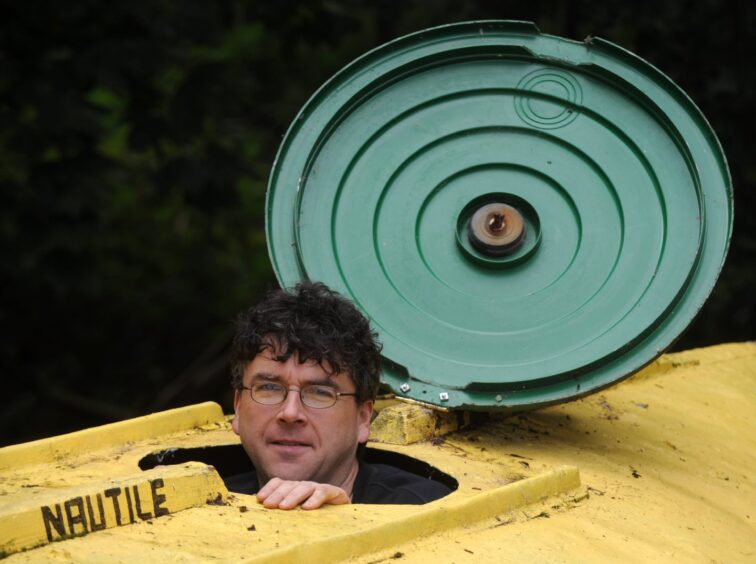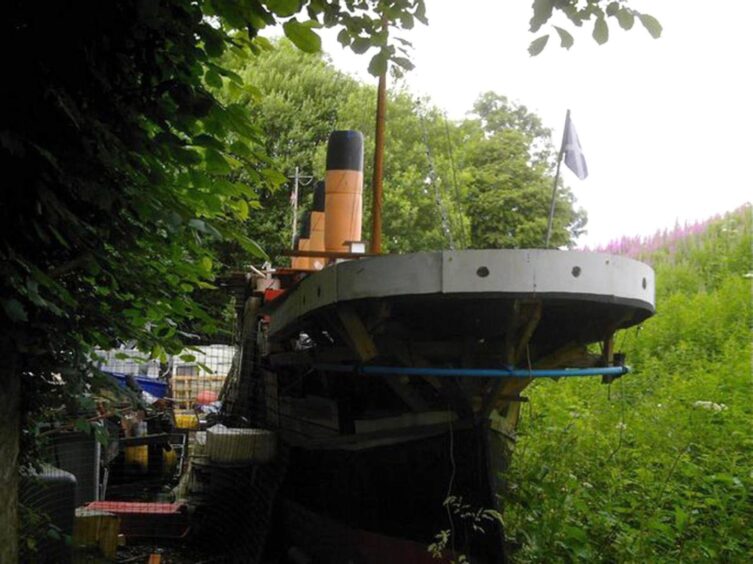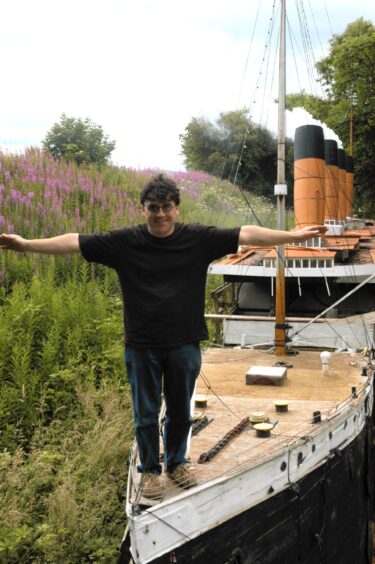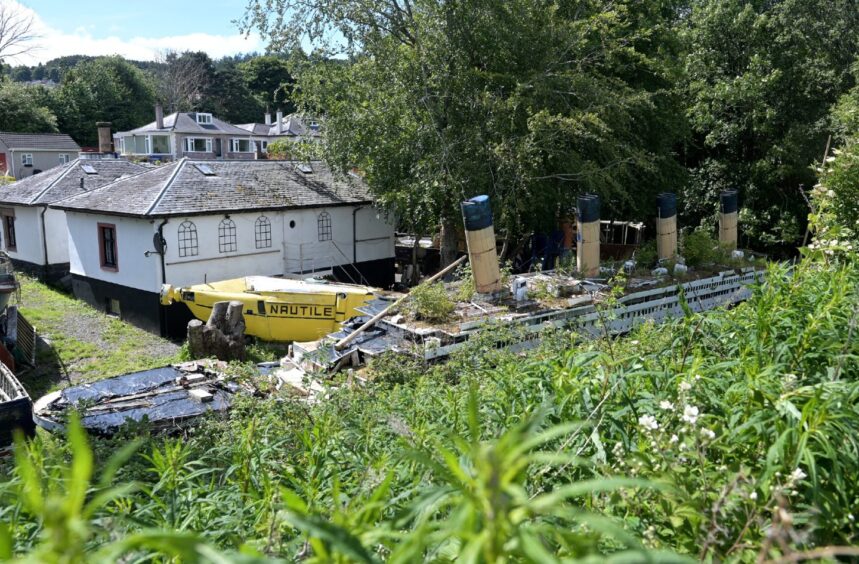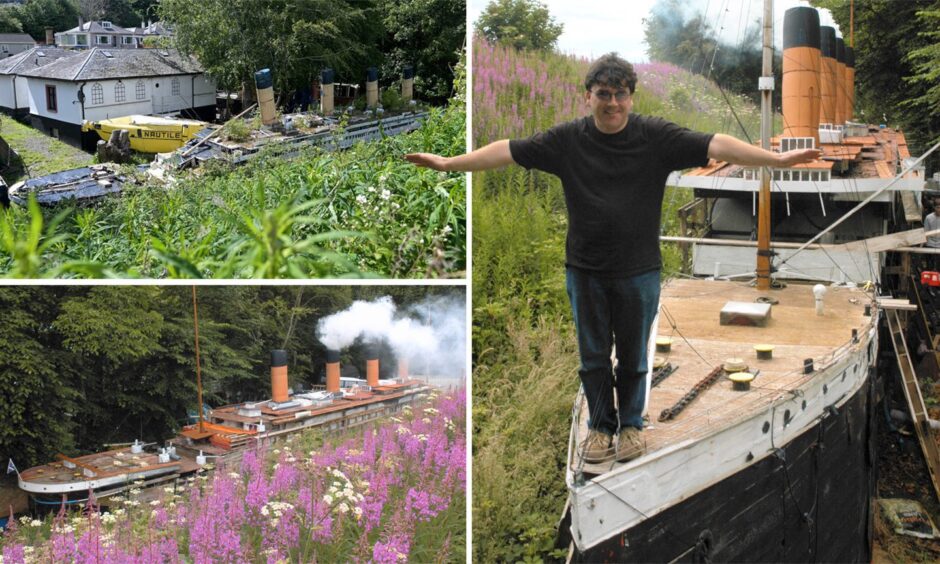
A strange sight has intrigued walkers along the Caledonian Canal towpath at Clachnaharry in Inverness for the past twenty years.
Wait, is that a model of the Titanic in that garden? And hang on, there’s a fishing boat and the Beatle’s Yellow Submarine, or is it a replica of the yellow submersible, Nautile?
You would be forgiven for rubbing your eyes.
Invernessians have been familiar with the creations of the late lighting engineer, Stan Fraser for years.
Many visited the museum he created in the garden of his home, The Old Toll House, after he opened it in 2012, timed to coincide with the 100th anniversary of the sinking of the Titanic.
Nowadays, the exhibits lie gently falling apart.
Sadly, Stan died six years ago, and despite one man’s campaign to try and preserve his extraordinary work, nature has moved in and is beginning to win.
George Glaister, a semi-retired businessman from Evanton recently went to have another look at Ship Space, as Stan called his dream.
“It’s almost past the point of no return,” he said from the towpath, looking over at the decaying craft.
After Stan’s death George tried in vain to save the exhibits.
He was inspired by a meeting he’d had with Stan a few years earlier.
He said: “I was walking along the towpath, spotted the Titanic, and went to have a look.
“There was a sign saying closed, but Stan saw me and gave me a guided tour.
“The whole house was a museum, with memorabilia inside, and even a model of Harland & Wolff where Titanic was built.”
Stan was forced to stop working after he was diagnosed with ME, and made the museum his passion.
The Inverness Titanic was made of three caravans
George said: “Titanic was brilliantly done, to scale.
“The original Titanic was 883ft long, Stan’s was 88ft.
“It was made from three caravans put together.
“They created three compartments, one of which Stan converted to look like the Titanic’s Cafe Parisien, another was the engine room and another the comms room with a sleeping radio operator in it.
From time to time a fog horn would roar forth from the model.
Smoke even came from the funnels… and you won’t guess what they were made from
“The superstructure was ingenious, using lots of pallets,” George said. “The funnels were made from household bins and Stan even rigged up smoke to come from them.
“He made model lifeboats too.
“It was beautiful.”
Stan started his labour of love around the year 2000.
At the time, he said he wasn’t sure where his love of all things nautical came from.
But his late mother Jessie from Badachro, Wester Ross, was in the Wrens [Women’s Royal Naval Service] during the war, and he was taken out sea fishing from a tender age.
Stan said at the time: “My mother told me loads of seafaring stories, and I think that developed my love of the sea. I think the Titanic is the most beautiful ship ever made and much prettier than any liner today.
“She started at the shed where I store my stage equipment and gradually evolved, using a static caravan as the main central hull section.”
At that point, Stan was even contemplating building a scaled-down galleon on his fifth-of-an-acre garden.
And he was the ultimate up-cycler, with the paraphernalia for his creations costing less than £100 over six years.
“I started to build a dummy Titanic for fun. I had two caravans in the garden and I used these as the base.
“Someone gave me an old shed to use and a friend who was building a house gave me some wood and nails to recycle and that got me started.
“This is my tribute to a great ship and those who died on her.”
When plans for the Inverness Titanic almost hit the iceberg of council red tape
By 2006, Stan was speaking publicly of his ambition to establish a new maritime visitor attraction in his garden.
This brought his great oeuvre to the attention of Highland Council, who told him he needed planning permission for it because of its size.
They said that although there had been no complaints about the model, the structure should have had planning permission, and it looked like Stan might have to tear it down.
“If the building concerned wasn’t a listed building or located within a conservation area then the model might not require planning permission depending on how close it is to the house and previous extensions to the house,” said the council.
After a tense few days, the council backed down.
They said because the structure was substantially completed more than four years ago it was beyond the time limit for enforcement action, and : “Given its relatively discrete location, little planning purpose or public interest would be served by taking that particular matter further.”
Stan felt like the king of the world.
““I have had a lot of people coming up to me in the street saying they had heard about the model and there was no way they were going to let the council make me pull it down.
“People in Inverness love it.”
The Inverness Titanic museum acquired more vessels
Over the next few years more craft came into the tiny space, including an RNLI Watson-class lifeboat, a replica Buckie herring drifter and a West Coast creel boat.
Stan finally opened his museum in 2012, not as a commercial venture but entry by donation to RNLI.
It would function for only a few short years until his untimely death in 2018.
George Glaister stands on the tow path and looks over the vegetation at the slowly disintegrating remains of Stan’s labours of love.
He said: “What Stan did was amazing and not appreciated by the authorities at the time.
“It would have an amazing attraction with a bit of support.
“It’s sad, but possibly fitting, that Stan’s Titanic lies rotting, just like the original at the bottom of the Atlantic.”
More Past Times stories
Could Titanic links be fuelling horror haunting of former West Coast hotel room?
‘North-east man dead’: The myths and facts that link Aberdeen to the Titanic disaster
Visit a lost Elgin with black and white photos colourised for first time
